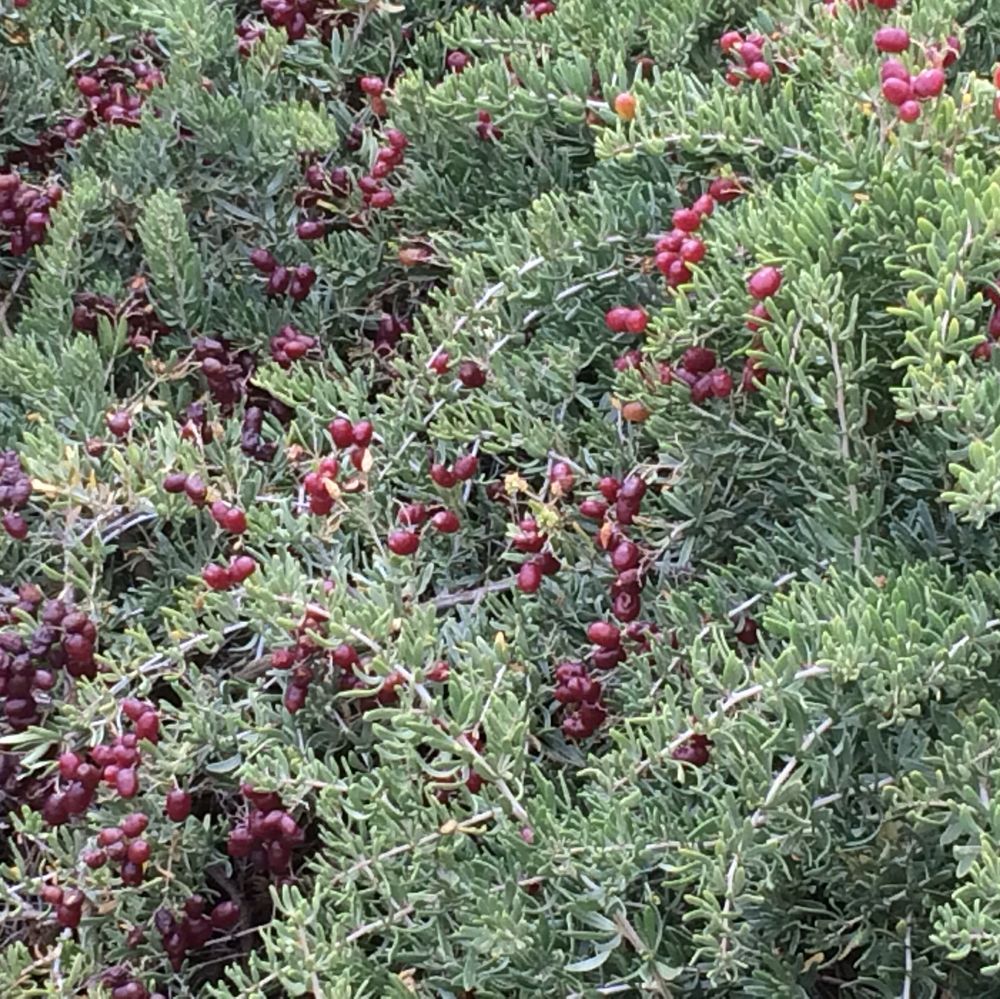Phoenicean juniper
(Juniperus phoenicea)

Description
Juniperus phoenicea, the Phoenicean juniper or Arâr, is a juniper found throughout the Mediterranean region, from Morocco and Portugal east to Italy, Turkey and Egypt, south on the mountains of Lebanon, the Palestine region and in western Saudi Arabia near the Red Sea, and also on Madeira and the Canary Islands. It mostly grows at low altitudes close to the coast, but reaches 2,400 metres (7,900 ft) altitude in the south of its range in the Atlas Mountains. It is the vegetable symbol of the island of El Hierro. The tree's essential oil is especially rich in the tricyclic sesquiterpene thujopsene; the heartwood contains an estimated 2.2% of this hydrocarbon. The biochemist Jarl Runeburg noted in 1960 that "Juniperus phoenicea appears to be the most convenient source of thujopsene so far encountered." These essential oils used to be used in cosmetics, and have been shown to protect the liver as well. Its wood is often used for small manufactured objects and inlay works. In parts of Africa when the trunk is straight, the wood is used for parts of buildings as well as carpentry. Mainly in Africa, however, it is used for fuel and producing charcoal. Additionally, the cones can be used in cooking or in alcoholic beverages. Specifically, they are used to flavor gin. In Egypt around 1500BC was the first recorded use of using the Juniperus phoenicea medicinally, which was to relieve joint and muscle pain. In Algerian folk medicine, the leaves are used in various ways to treat diabetes, diarrhea, rheumatism, and bronco-pulmonary disease. They can also be used as a diuretic. The leaves and berries combined can be used to combat diabetes as well in both Algerian and Moroccan medicine. In Jordanian traditional medicine, bronchitis and arthritis are treated by a steam inhalant of this plant. Additionally, the leaves and berries are used to treat diabetes mellitus, edema, and urinary tract problems. Specifically, extracts from the leaves are also used to treat gout. The leaves and berries are used in Tunisian folk medicine to treat diarrhea, rheumatism, acute gonococcal infection, eczema, dysmenorrhea, and sunstroke. In various medicine traditions, the essential oils are used to aid digestion because they assist the flow of digestive fluids, therefore improving digestion, as well as eliminating gas and stomach cramping. In descending order of concentration, these essential elements are found in this plant: Ca, K, Fe, Na, Zn, Cr, Co. Likewise, these are the toxic elements: Br, As, Sb. In trace amounts, these other elements are also found in this plant: Ba, Ce, La, Lu, Rb, Sc, Sm, and Yb.
Taxonomic tree:







